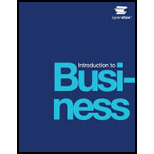
Concept explainers
As the controller of a financial company, take pride in the and internal
The passage of the Sarbanes-Oxley Act, with its emphasis on testing internal control systems, initiated several changes. You have studied the law and made adjustments to ensure you comply with the regulations, even though it has created additional work. Your auditors, however, have chosen to interpret SOX very aggressively—too much so, in your opinion. The auditors have recommended that you make costly improvements to your systems and also enlarged the scope of the
Using a web search tool, locate articles about this topic and then write the responses to the following questions.Be sure to support your arguments and cite your sources.
Ethical Dilemma: Should you change auditors because your current one is too stringent in applying theSarbanes-Oxley Act? What other steps could you take to this situation?
Sources: Loren Kasuske, "The 4 Biggest Pros and Cons of the Sarbanes-Oxley Act,https://ktconnections.com, June 8, 2017; Terry Sheridan, "Financial Services Spend More than $1M Annually on SOX,"https://www.accountingweb.com, August 2, 2016; "Sarbanes-Oxley Is Paying Off for Companies Despite Increased Costs and Hours. Protiviti Survey Finds."http://www.pmewswirexom, June 2, 2016; Daniel Kim. "Top 3 Ways to Reduce SOX Compliance Costs," https://www.soxhub.com, December 14, 2015.
To determine:
Whether the auditors should be changed because the current one is too stringent in applying the Sarbanes-Oxley Act, and what other steps could be taken to resolving this situation.
Introduction:
The Sarbanes-Oxley Act (SOX) was passed by the US Congress in 2002, in terms to protecting investors from fraudulent financial reporting by corporations such as auditors, accountants and corporate officers.
Explanation of Solution
By not complying with the SOX Act, the company may face larger issues in the future with the mistrust of investors and eventually losing them, which would affect the capital intake and stock market value of the firm.
Therefore, it would be more relevant for the medium-sized financial services company to take in the input of the auditors and make more relevant changes in accordance to the relevance to the act because if not; there can be risks which would have to be taken. Believing that the company follows the passage of the SOX Act, it would not suffice that all the sections of the Act are followed. Thereby, suggesting keeping the auditors, and rather renovate the company's operational facilities.
In accordance to resolve the issue, first the Board of Directors or the top management would have to be briefed about the whole SOX Act and should be notified of the risks and losses which would have to be faced with not fully complying with the Act, and how it can affect their shareholdings as a result.
Then full review of the company's books in-house should be done to understand the points in which they are not completely following the Act.
And last, subsistent changes to the company should be made and new contingent plans should be made following the course of the Act. This would allow them to relive the streak of continuous compliments by their auditors on their procedures.
Want to see more full solutions like this?
Chapter 14 Solutions
Introduction to Business
Additional Business Textbook Solutions
Horngren's Accounting (12th Edition)
Intermediate Accounting (2nd Edition)
Engineering Economy (17th Edition)
Business Essentials (12th Edition) (What's New in Intro to Business)
Financial Accounting, Student Value Edition (5th Edition)
- Solve this Accounting problemarrow_forwardPlease provide the answer to this general accounting question using the right approach.arrow_forwardNet sales are $4,500,000, beginning total assets are $1,800,000, and the asset turnover is 2.5 times. What is the ending total asset balance? HELParrow_forward
- Can you provide a detailed solution to this financial accounting problem using proper principles?arrow_forwardJordan Company, which expects to start operations on January 1, year 2, will sell digital cameras in shopping malls. Jordan has budgeted sales as indicated in the following table. The company expects a 15 percent increase in sales per month for February and March. The ratio of cash sales to sales on account will remain stable from January through March. Required A) Complete the sales budget by filling in the missing amounts. B) Determine the amount of sales revenue Jordan will report on its first quarter pro forma income statement. Sales January February March Cash Sales $48,000 Sales on Account $110,000 Total Budgeted Sales $158,000 Note: Do not round intermediate calculations. Round final answers to two decimal places.arrow_forwardPlease explain the correct approach for solving this financial accounting question.arrow_forward
 Foundations of Business (MindTap Course List)MarketingISBN:9781337386920Author:William M. Pride, Robert J. Hughes, Jack R. KapoorPublisher:Cengage Learning
Foundations of Business (MindTap Course List)MarketingISBN:9781337386920Author:William M. Pride, Robert J. Hughes, Jack R. KapoorPublisher:Cengage Learning Foundations of Business - Standalone book (MindTa...MarketingISBN:9781285193946Author:William M. Pride, Robert J. Hughes, Jack R. KapoorPublisher:Cengage Learning
Foundations of Business - Standalone book (MindTa...MarketingISBN:9781285193946Author:William M. Pride, Robert J. Hughes, Jack R. KapoorPublisher:Cengage Learning

